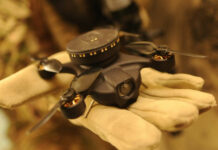As the role of a man-portable anti-armor weapon continues to morph from a dedicated anti-tank weapon to a general-purpose fire support asset for light and medium forces, the international market for man-portable anti-armor and bunker buster weapons remains robust. In its annual analysis, “The World Market for Man-Portable Anti-Armor and Bunker Buster Weapons,” the Forecast International Weapons Group expects the market will produce nearly 1.9 million weapons, worth $5.33 billion, through 2014.
 Dean Lockwood, a weapons systems analyst at Forecast International, notes the Russian RPG (Ruchnoy Protivotankoviy Granatomet) line of weapons continues to dominate this market. Under the auspices of the Rosoboronexport organization, the combined output of Russian defense contractors will account for over 68 percent of man-portable anti-armor and bunker buster weapon production, worth over 51 percent of the total market value, through 2014. The most significant production will involve the Russian RPG-26 and RPG-27. According to Lockwood, “Combined production of these two weapons will account for over 54 percent of all new production, worth over 31 percent of the total market value, through 2014.” Nevertheless, the ubiquitous RPG-7 remains the man-portable anti-armor weapon of choice worldwide. Through 2014, the RPG-7 (and the follow-on RPG-16) – as well as various licensed and unlicensed copies – will account for nearly 8 percent of all new production, worth 5.63 percent of the total market value.
Dean Lockwood, a weapons systems analyst at Forecast International, notes the Russian RPG (Ruchnoy Protivotankoviy Granatomet) line of weapons continues to dominate this market. Under the auspices of the Rosoboronexport organization, the combined output of Russian defense contractors will account for over 68 percent of man-portable anti-armor and bunker buster weapon production, worth over 51 percent of the total market value, through 2014. The most significant production will involve the Russian RPG-26 and RPG-27. According to Lockwood, “Combined production of these two weapons will account for over 54 percent of all new production, worth over 31 percent of the total market value, through 2014.” Nevertheless, the ubiquitous RPG-7 remains the man-portable anti-armor weapon of choice worldwide. Through 2014, the RPG-7 (and the follow-on RPG-16) – as well as various licensed and unlicensed copies – will account for nearly 8 percent of all new production, worth 5.63 percent of the total market value.
Despite the domination of the Russian RPG line, plenty of opportunities exist in this evolving market. According to Lockwood, “The combined output of the leading European players will provide only 13.96 percent of all man-portable anti-armor and bunker buster weapons production. However, these high-end European products will account for over 33 percent of the total market value through 2014.” Talley Defense Systems, the sole U.S. player to have any discernable impact on this market, will account for 5.14 percent of all production, worth 5.26 percent of the total market value, through 2014. Lockwood also notes that, unlike many other defense markets, the People’s Republic of China has virtually no impact on the international market for man-portable anti-armor and bunker buster weapons. The Chinese State Arsenals system, under the auspices of the China North Industries Corporation (NORINCO), will contribute less than 1 percent of total production and market value with its Type 69 line.
Despite the uncertainties of a post-Cold War world and the glut of available weapons, the international market for man‑portable anti-armor and bunker buster weapons remains a vibrant, dynamic environment. Evolving threat scenarios and force structures are creating a whole new field of opportunity, as the man-portable anti-armor weapon evolves into a general-purpose fire support asset for light and medium forces in the age of asymmetrical warfare.
















